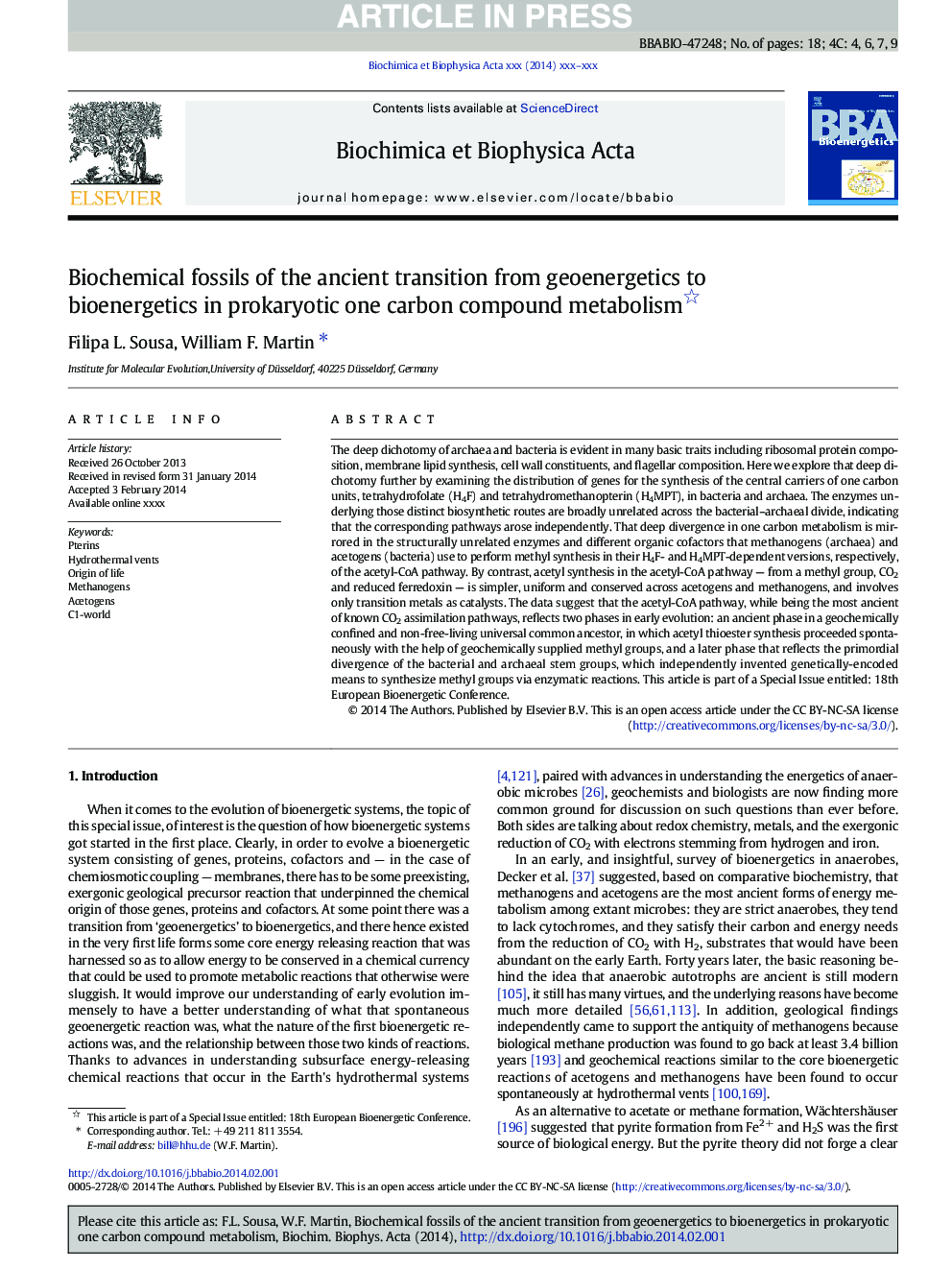| کد مقاله | کد نشریه | سال انتشار | مقاله انگلیسی | نسخه تمام متن |
|---|---|---|---|---|
| 10795647 | 1052589 | 2014 | 18 صفحه PDF | دانلود رایگان |
عنوان انگلیسی مقاله ISI
Biochemical fossils of the ancient transition from geoenergetics to bioenergetics in prokaryotic one carbon compound metabolism
ترجمه فارسی عنوان
فسیل های بیوشیمیایی انتقال گذار باستان از ژئودنتیک انرژی به انرژی زیستی در متابولیسم یک کربن پروکاریوتی
دانلود مقاله + سفارش ترجمه
دانلود مقاله ISI انگلیسی
رایگان برای ایرانیان
کلمات کلیدی
موضوعات مرتبط
علوم زیستی و بیوفناوری
علوم کشاورزی و بیولوژیک
دانش گیاه شناسی
چکیده انگلیسی
The deep dichotomy of archaea and bacteria is evident in many basic traits including ribosomal protein composition, membrane lipid synthesis, cell wall constituents, and flagellar composition. Here we explore that deep dichotomy further by examining the distribution of genes for the synthesis of the central carriers of one carbon units, tetrahydrofolate (H4F) and tetrahydromethanopterin (H4MPT), in bacteria and archaea. The enzymes underlying those distinct biosynthetic routes are broadly unrelated across the bacterial-archaeal divide, indicating that the corresponding pathways arose independently. That deep divergence in one carbon metabolism is mirrored in the structurally unrelated enzymes and different organic cofactors that methanogens (archaea) and acetogens (bacteria) use to perform methyl synthesis in their H4F- and H4MPT-dependent versions, respectively, of the acetyl-CoA pathway. By contrast, acetyl synthesis in the acetyl-CoA pathway - from a methyl group, CO2 and reduced ferredoxin - is simpler, uniform and conserved across acetogens and methanogens, and involves only transition metals as catalysts. The data suggest that the acetyl-CoA pathway, while being the most ancient of known CO2 assimilation pathways, reflects two phases in early evolution: an ancient phase in a geochemically confined and non-free-living universal common ancestor, in which acetyl thioester synthesis proceeded spontaneously with the help of geochemically supplied methyl groups, and a later phase that reflects the primordial divergence of the bacterial and archaeal stem groups, which independently invented genetically-encoded means to synthesize methyl groups via enzymatic reactions. This article is part of a Special Issue entitled: 18th European Bioenergetic Conference.
ناشر
Database: Elsevier - ScienceDirect (ساینس دایرکت)
Journal: Biochimica et Biophysica Acta (BBA) - Bioenergetics - Volume 1837, Issue 7, July 2014, Pages 964-981
Journal: Biochimica et Biophysica Acta (BBA) - Bioenergetics - Volume 1837, Issue 7, July 2014, Pages 964-981
نویسندگان
Filipa L. Sousa, William F. Martin,
